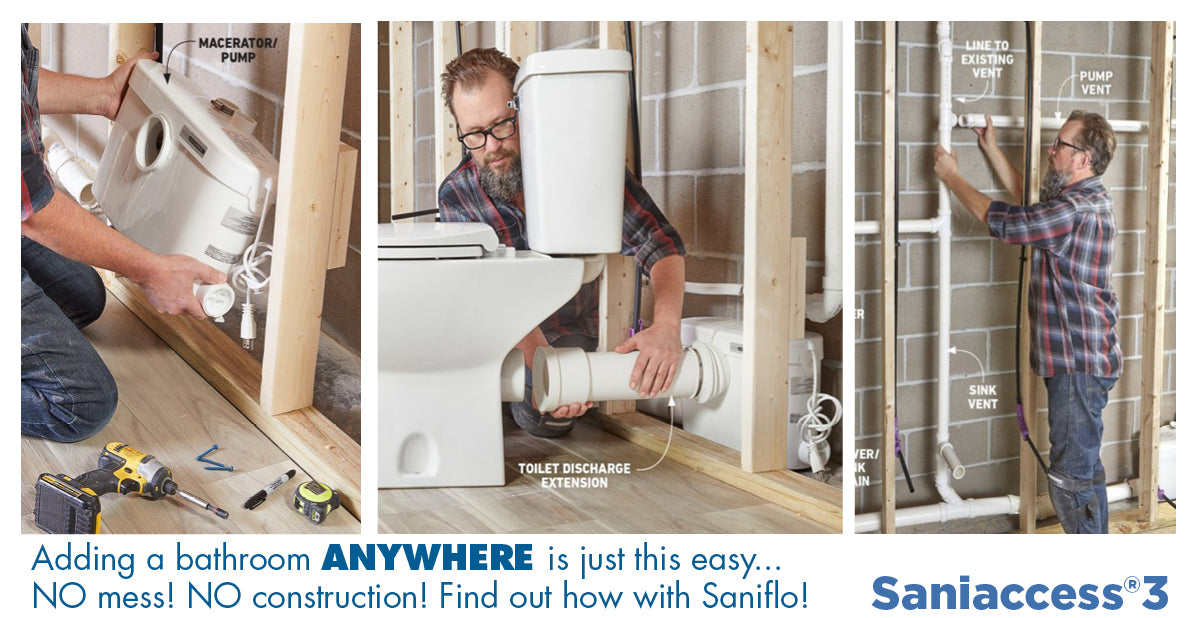
Does a Saniflo Toilet Need to Be Vented? Exploring Saniflo's Venting Requirements
Saniflo toilets have gained popularity due to their versatility and convenience. These innovative fixtures use macerator technology to break down waste, allowing for the installation of a toilet, sink, or shower in locations where traditional plumbing is challenging or impractical.
However, it's crucial to understand that all Saniflo products, including toilets, require proper venting to operate effectively.

The Importance of Venting in Plumbing Systems
Before we dive into Saniflo's venting requirements, let's briefly discuss the significance of venting in plumbing systems. Vent pipes serve multiple purposes within a plumbing system, including:
-
Preventing sewer gases: Vent pipes allow harmful gases, such as methane and hydrogen sulfide, to escape from the drainage system. This prevents foul odors and ensures a healthy living environment.
-
Maintaining proper drainage: Venting helps maintain equal air pressure in the plumbing system, allowing wastewater to flow smoothly. It prevents the formation of vacuum locks and enables the efficient discharge of wastewater.

Saniflo's Venting Requirements
When it comes to Saniflo toilets, proper venting is essential to ensure optimal performance and compliance with plumbing codes. Saniflo products require an 1-1/2 inch vent pipe, which must be vented to the main vent stack as per plumbing regulations.
The 1-1/2 inch vent pipe is designed to remove air from the macerator unit, creating the necessary pressure for efficient waste disposal. Without proper venting, the system may experience issues such as slow drainage, gurgling sounds, or even complete failure.
Compliance with plumbing codes is crucial for several reasons. It ensures the safety and functionality of the plumbing system, prevents potential health hazards, and avoids legal consequences. Therefore, it is essential to adhere to the venting requirements provided by Saniflo and local plumbing codes when installing a Saniflo toilet.
Venting to the Main Vent Stack
To effectively vent a Saniflo toilet, it is necessary to connect the 1-1/2 inch vent pipe to the main vent stack. The main vent stack is a vertical pipe that extends through the roof or connects to an existing venting system.
By connecting the vent pipe to the main vent stack, the airflow within the Saniflo system is regulated, allowing for efficient drainage and prevention of sewer gases.
It's important to ensure a proper connection and secure installation to avoid any leaks or blockages in the venting system.
During installation, it's advisable to consult with a professional plumber or follow the manufacturer's guidelines to guarantee proper venting and compliance with plumbing codes.
Benefits of Venting a Saniflo Toilet
Venting a Saniflo toilet offers several benefits, both for the functionality of the system and the overall comfort of your home:
-
Prevention of foul odors and sewer gas buildup: Proper venting eliminates foul odors by directing sewer gases outside the building. This ensures a fresh and pleasant environment in your bathroom.
-
Maintenance of optimal performance and drainage: Adequate venting allows wastewater to flow freely, preventing clogs and ensuring efficient drainage. It minimizes the risk of backups and maintains the toilet's performance over time.
-
Compliance with plumbing codes and regulations: Venting a Saniflo toilet according to plumbing codes ensures that your installation meets the required standards. Compliance not only ensures the safety and functionality of your plumbing system but also avoids potential legal issues.

Common Misconceptions and Myths
Despite the importance of proper venting, there are several misconceptions and myths surrounding the venting requirements for Saniflo toilets. Let's address a few of them:
-
Misconception: Saniflo toilets don't need venting like traditional toilets. Fact: All Saniflo toilets require proper venting to operate efficiently and comply with plumbing codes. Venting is necessary to prevent issues and maintain the system's functionality.
-
Myth: Venting a Saniflo toilet is optional if it's installed near an existing vent stack. Fact: While proximity to an existing vent stack may make installation easier, connecting the Saniflo vent pipe to the main vent stack is still required for proper venting.
-
Misconception: Saniflo toilets can share a vent stack with other plumbing fixtures without issues. Fact: Each Saniflo toilet unit should have its dedicated vent pipe connected to the main vent stack. Sharing a vent stack may compromise the system's performance and lead to drainage problems.
Addressing these misconceptions and myths is crucial for a better understanding of the venting requirements associated with Saniflo toilets. By following the proper guidelines and regulations, you can ensure optimal performance and avoid any potential complications.
Related Articles:
What is the Best Way to Clean a Saniflo Toilet? Your Definitive Guide
Does a Saniflo Toilet Need to Be Vented? Exploring Saniflo's Venting Requirements

Leave a comment